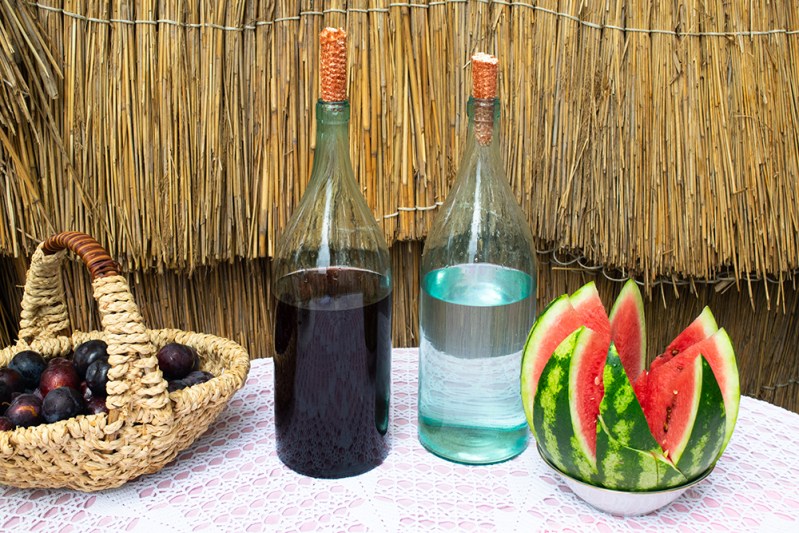When times are tough, the tough make their own hooch. American history has taught us as much, from desperate bathtub creations to Prohibition-era sneakiness.
These days, we’re practically inundated with the stuff, with thousands of producers keeping the beer, wine, and spirits train topped off. But that doesn’t mean you shouldn’t try your hand at making some of your own, especially when it’s something as relatively simple and intoxicating as moonshine.
What is Moonshine?

It’s debatable, but essentially moonshine in un-aged white whisky. In other words, it’s fairly quickly assembled and therefor seen as somewhat juvenile, or at least not up to craft standards (although that is changing). It’s also generally viewed as illegal, a DIY spirit often made from home without the aid of commercial equipment.
We love moonshine for a variety of reasons. There’s something patriotic about the stuff, a concoction that defies rules and regulations in the name of simple, buzzed-out bliss. Being a loosely defined category, it allows the producer a lot of creative license. It’s also not too tricky to make and we all know it’s more rewarding to sip on something you engineered yourself. It usually doesn’t have the smoothness or richer notes that its sibling aged whiskey tends to have, but it’s still fun to play with.
How to Make Moonshine
Folks have been making moonshine for generations, with limited resources. In other words, you don’t need a still or a barrel — just a few essentials and some gumption. Traditionally, it’s made with a corn-based mash bill but that’s assuming you have a proper distilling setup, which you likely don’t (it’s illegal to use a still without the proper permits, after all). So for our purposes here, we’ll go with a bottle of neutral grain spirits.
Anybody who’s been duped into taking a shot of Everclear knows that its basically just rocket fuel. Think of it as a high-octane blank canvas atop of which you can apply some color and flavor. With cooler days ahead, let’s go with some warm tones to make a slightly doctored-up moonshine that’s not just tolerable, but downright tasty.
Materials
- 1 gallon of apple cider
- 1 one-liter bottle of Everclear (or similar neutral grain spirit)
- 6-8 stars of anise
- 6 cinnamon sticks
- 1 cup of simple syrup
- 1 cup brown sugar
Directions
- Bring apple cider, anise, cinnamon, brown sugar, and simple syrup to a boil. If you like a little burst of citrus, add the peel of an orange or two into the pot. Reduce heat and let simmer for 15 minutes.
- Let the mixture cool and strain through cheesecloth or strainer if you prefer.
- Add the Everclear and stir. Do not heat once the alcohol is added. Once mixed, bottle the moonshine in mason jars or whatever you happen to have lying around.
What you’re left with is a simple, slightly sweet apple moonshine with some wintery spices for good measure. You can enjoy it on its own or dress it up a bit with some falernum or poured atop a half-glass of your favorite cheap sparkling wine or Prosecco. Even better, hit it with a float of a complementary liqueur like Cardamaro or Amaretti.
Again, think of the Everclear or whichever rectified spirit you use as the blank sheet of paper. Adjust your ingredients as the seasons dictate, going with in-season fruit and matching spices.
Editors' Recommendations
- The classic vodka cocktails you need to know how to make
- How to make an Old Fashioned cocktail the right way
- The ultimate guide to Lebanese cuisine, a rich and distinct food culture
- How to make a killer meatloaf (and it’s easier than you think)
- How to make a mojito: The ultimate cocktail recipe


